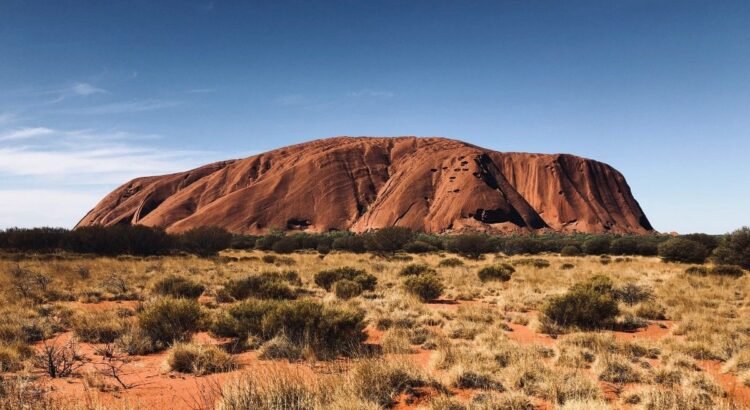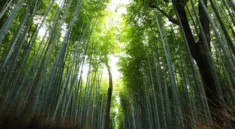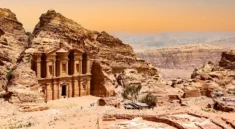
In the vast, sunbaked heart of Australia’s Red Centre stands Uluru, one of the most iconic natural landmarks on Earth. Towering 348 meters above the desert floor and stretching 3.6 kilometers in circumference, this massive sandstone monolith is more than just a geological wonder—it is a sacred site deeply woven into the spiritual and cultural fabric of Anangu, the Indigenous people of the area.
Known also as Ayers Rock, the name given by colonial explorers, Uluru’s ancient presence predates recorded history. Its color-shifting façade—glowing red at sunrise and sunset, turning gold under the midday sun, and revealing purples and browns in shadow—makes it a living, breathing entity in the eyes of its traditional custodians. To explore Uluru is to step into a landscape of timeless beauty, spiritual power, and cultural reverence.
A Geological Marvel Shaped by Time
Uluru’s sheer size and distinct form have fascinated geologists for decades. Estimated to be more than 500 million years old, it is a remnant of an ancient seabed, gradually exposed through eons of erosion and tectonic activity. What appears today as a solitary monolith is, in fact, the exposed tip of a massive underground rock formation stretching for kilometers beneath the surface.
Its rust-red color comes from the oxidation of iron-bearing minerals on the rock’s surface—a natural patina that changes hues depending on the light, weather, and time of day. This play of light and shadow makes Uluru one of the most photographed natural sites in the world, and each image captures a different facet of its personality.
The Spiritual Heart of Australia
For the Anangu people, Uluru is not just a landmark—it is Tjukurpa, the foundation of their laws, culture, beliefs, and stories. Tjukurpa is a complex concept encompassing Creation time, moral order, and natural law, and Uluru plays a central role in it. The Anangu believe that ancestral beings created the landscape during the Dreamtime and that their spirits still reside within the rock.
Scattered along Uluru’s base are numerous sacred sites, caves, and rock art panels that tell the stories of ancestral beings such as the Mala (hare-wallaby) people, the Kuniya (python woman), and the Liru (poisonous snake man). Each crack, fissure, and cave is imbued with sacred meaning, and many locations are restricted to Anangu use only out of respect for their cultural protocols.
To the Anangu, Uluru is alive. It breathes, remembers, and connects the past, present, and future. As a visitor, you are not just entering a national park—you are stepping into a living cultural landscape.
Visiting Uluru: A Journey into the Red Centre
Uluru is located within the Uluru-Kata Tjuta National Park, a UNESCO World Heritage Site jointly managed by Parks Australia and the Anangu people. Getting there usually involves a flight into Ayers Rock Airport (Connellan Airport) from major Australian cities like Sydney or Melbourne, followed by a short drive to the nearby resort town of Yulara.
From there, a wide array of experiences await:
1. Base Walk: The Full Circumference
The Uluru Base Walk, a 10.6-kilometer loop, is the most immersive way to explore the rock up close. You’ll walk through mulga woodlands, red sand plains, and around waterholes like Mutitjulu, where Aboriginal rock art adorns the caves. Interpretive signs share Anangu stories and ecological information, offering a deeper understanding of the landscape and its meaning.
Walking the base, especially at dawn when the desert is cool and the light is golden, is an experience of profound serenity. You’ll hear birdsong, see lizards darting across your path, and feel a sense of quiet reverence.
2. Guided Cultural Tours
To truly appreciate Uluru, consider joining an Anangu-led tour or ranger-guided walk. These provide not only geographical context but also spiritual insight. You’ll learn about bush tucker (native foods), traditional tools, and the meanings of rock art motifs. Many guides are fluent in Pitjantjatjara and Yankunytjatjara, the local languages, and offer translation to English.
These tours are respectful, educational, and designed to foster mutual understanding between cultures.
3. The Field of Light
At night, the desert awakens in a different way with Bruce Munro’s “Field of Light” installation—a solar-powered art experience featuring over 50,000 spindles of light spread across the desert floor. As darkness falls, these colored lights pulse and shimmer, mirroring the stars above and evoking the dreamlike quality of Tjukurpa.
It’s a fusion of art, nature, and spirituality, and a beautiful way to end your day at Uluru.
Uluru at Sunrise and Sunset: Nature’s Theatre
No visit is complete without witnessing Uluru at dawn or dusk. Designated viewing platforms like Talinguru Nyakunytjaku offer panoramic vistas where you can watch the rock transform before your eyes.
- Sunrise paints the monolith with cool purples and fiery reds.
- Sunset sets it ablaze with warm golds and deep ochres.
Bring a camera, but don’t forget to pause and simply watch—it’s one of the most mesmerizing natural performances on Earth.
Respecting the Sacred: No Climbing Uluru
For many years, tourists climbed Uluru, despite repeated requests from the Anangu to stop. In October 2019, the climb was officially closed, marking a significant moment in reconciliation and cultural respect.
The closure reflects a growing recognition that preserving Indigenous beliefs and sacred sites is a shared responsibility. Instead of climbing, visitors are encouraged to walk the base, join cultural experiences, and learn about the significance of the land through respectful engagement.
Kata Tjuta: Uluru’s Majestic Neighbor
While Uluru often steals the spotlight, the nearby Kata Tjuta (The Olgas) are equally breathtaking. This group of 36 domed rock formations, rising as high as 546 meters, holds its own spiritual and cultural importance. The Valley of the Winds walk offers stunning views, steeped in silence and grandeur.
Kata Tjuta, meaning “many heads” in Anangu language, complements Uluru and is part of the greater spiritual landscape of Tjukurpa.
Flora and Fauna: Life in the Desert
Despite its arid environment, Uluru is surrounded by rich biodiversity. Over 400 species of plants grow in the park, many used by the Anangu for food, medicine, or tools. You’ll also find:
- Perentie lizards, the largest of their kind
- Spinifex hopping mice
- Wedge-tailed eagles and other birds of prey
- Seasonal wildflowers that carpet the desert after rains
The desert is alive in surprising and subtle ways, offering much to those who look closely.
A Symbol of National Identity
Uluru is more than a natural and cultural wonder—it is a symbol of Australian identity. It appears in national tourism campaigns, schoolbooks, paintings, songs, and films. Yet it is also a place that challenges visitors to go beyond surface impressions and to reckon with Australia’s complex history—a history that includes colonization, dispossession, resilience, and revival.
Standing before Uluru, many travelers feel a mix of awe, humility, and connection. It’s a moment that often inspires reflection, dialogue, and transformation.
Sustainable Tourism and Cultural Partnership
The success of Uluru-Kata Tjuta National Park is a testament to the power of joint management between government and Indigenous communities. The Anangu people play a central role in decision-making, guiding tourism practices, and ensuring that sacred traditions are honored.
This model is an example of cultural sustainability, where tourism benefits local communities, educates the public, and safeguards traditions.
Tips for Visitors
- Best Time to Visit: April to October, when temperatures are cooler.
- Dress: Wear light, breathable clothing and a hat. Desert temperatures vary widely.
- Stay: Accommodations in Yulara range from luxury resorts to budget lodges.
- Photography: Some sacred sites prohibit photography—always follow signs and respect local customs.
- Support Local: Buy from Indigenous-owned businesses and art cooperatives.
Conclusion: A Sacred Journey into the Soul of Australia
Exploring Uluru is not merely a sightseeing experience—it is a pilgrimage into one of Earth’s oldest stories. From its monumental geological presence to its deep spiritual meaning, Uluru invites visitors to listen, to learn, and to honor.
As you walk its red dust paths, stand before its sacred caves, and gaze at its ever-changing surface, you’re doing more than witnessing nature’s wonder—you are entering a dialogue with an ancient culture that has endured for tens of thousands of years.
In Uluru, the land speaks. All you have to do is listen.




